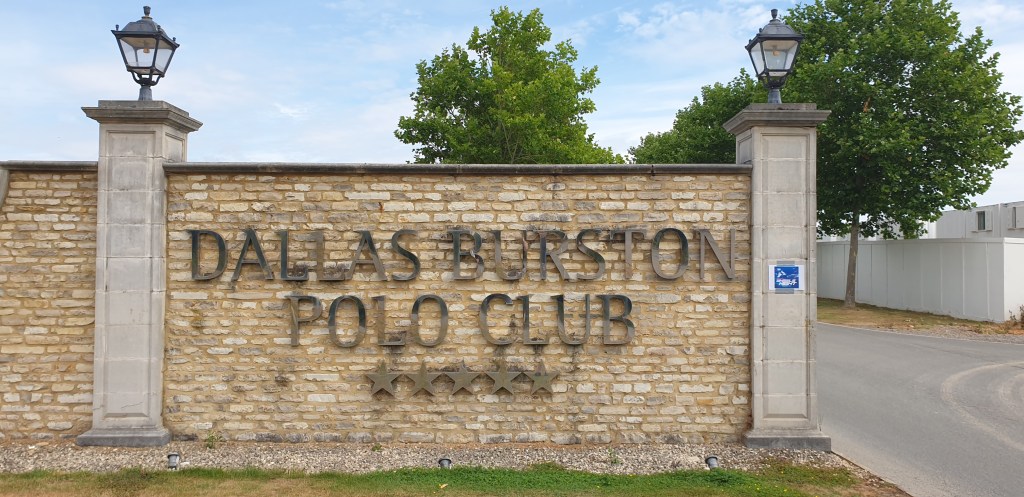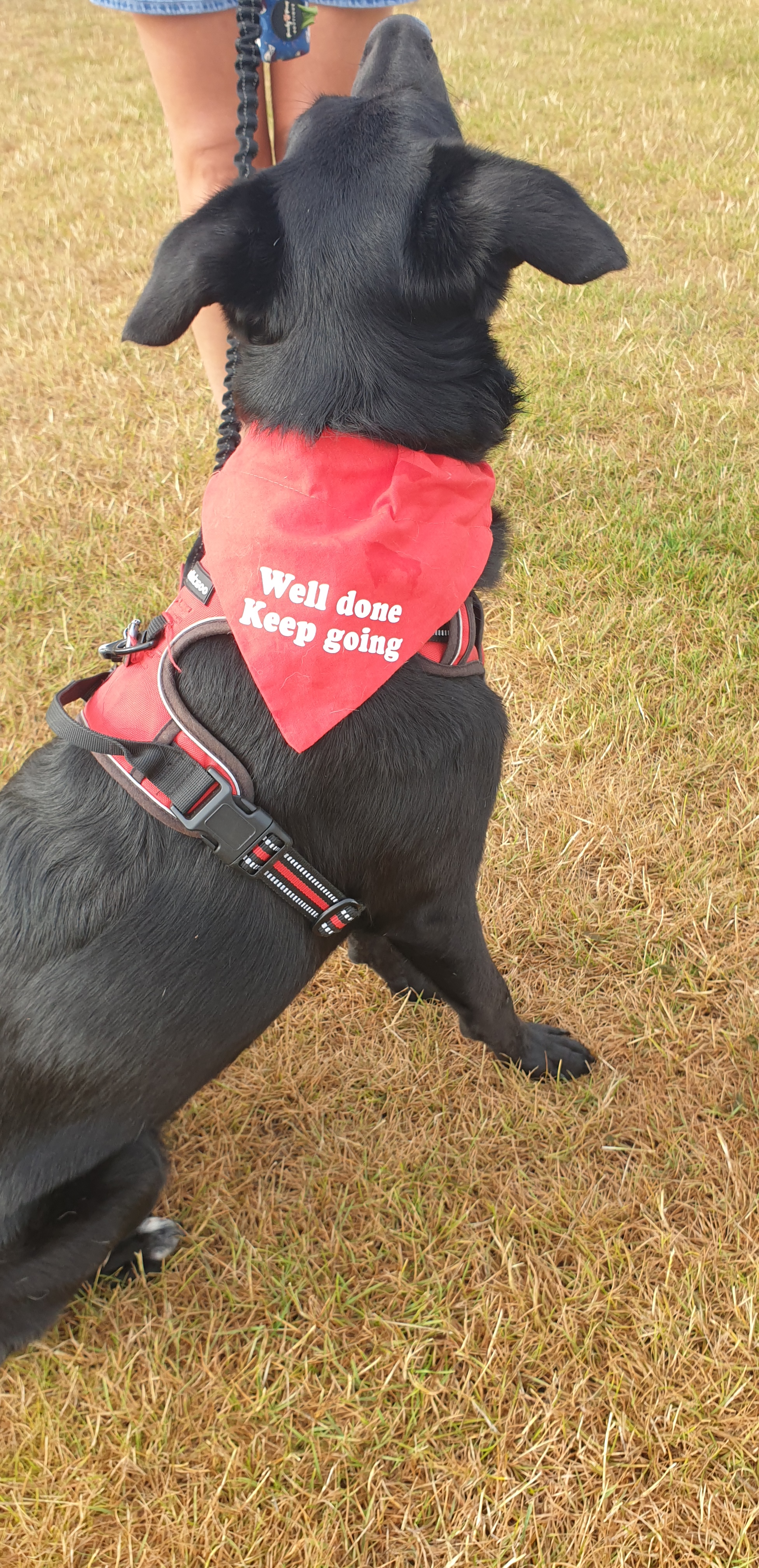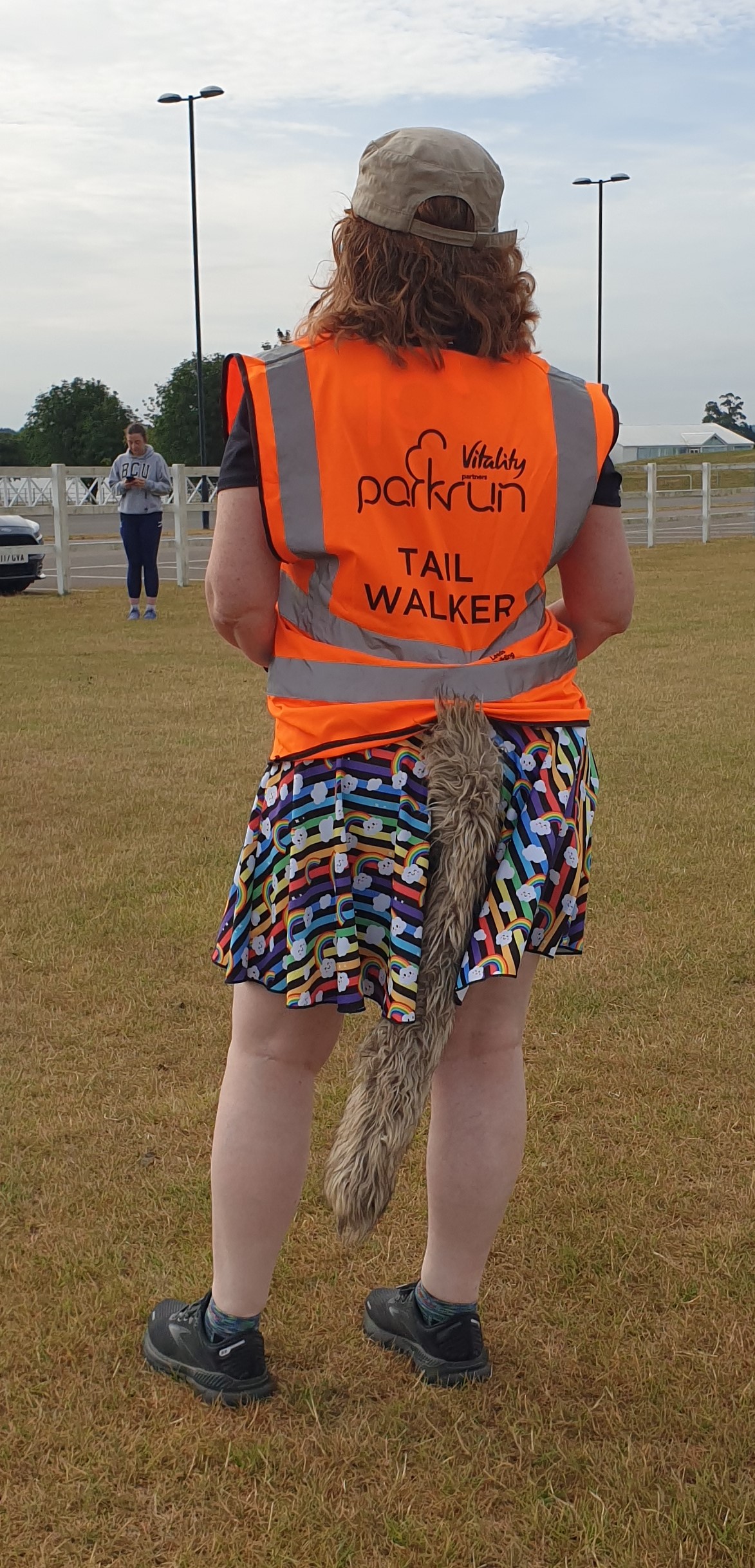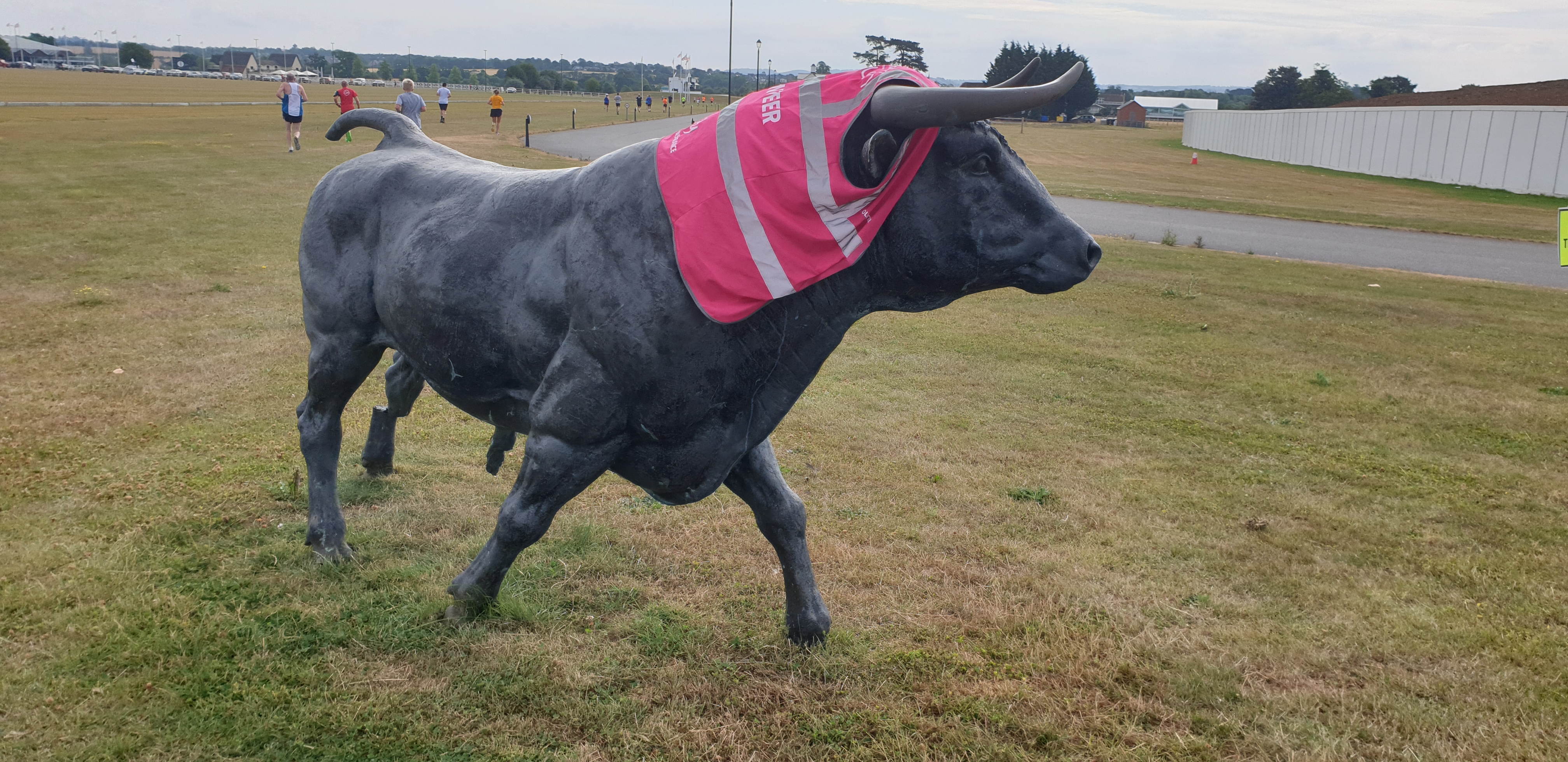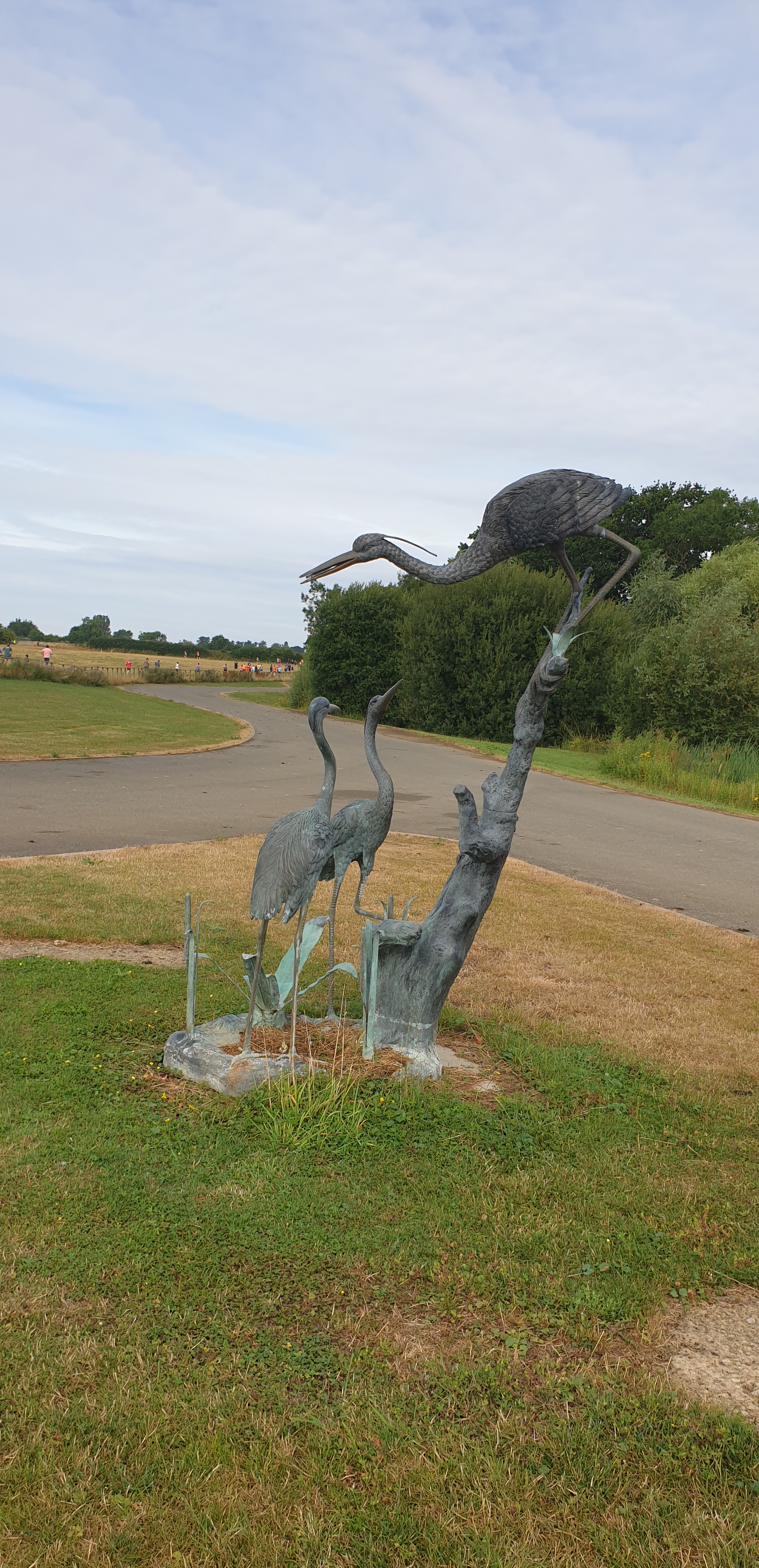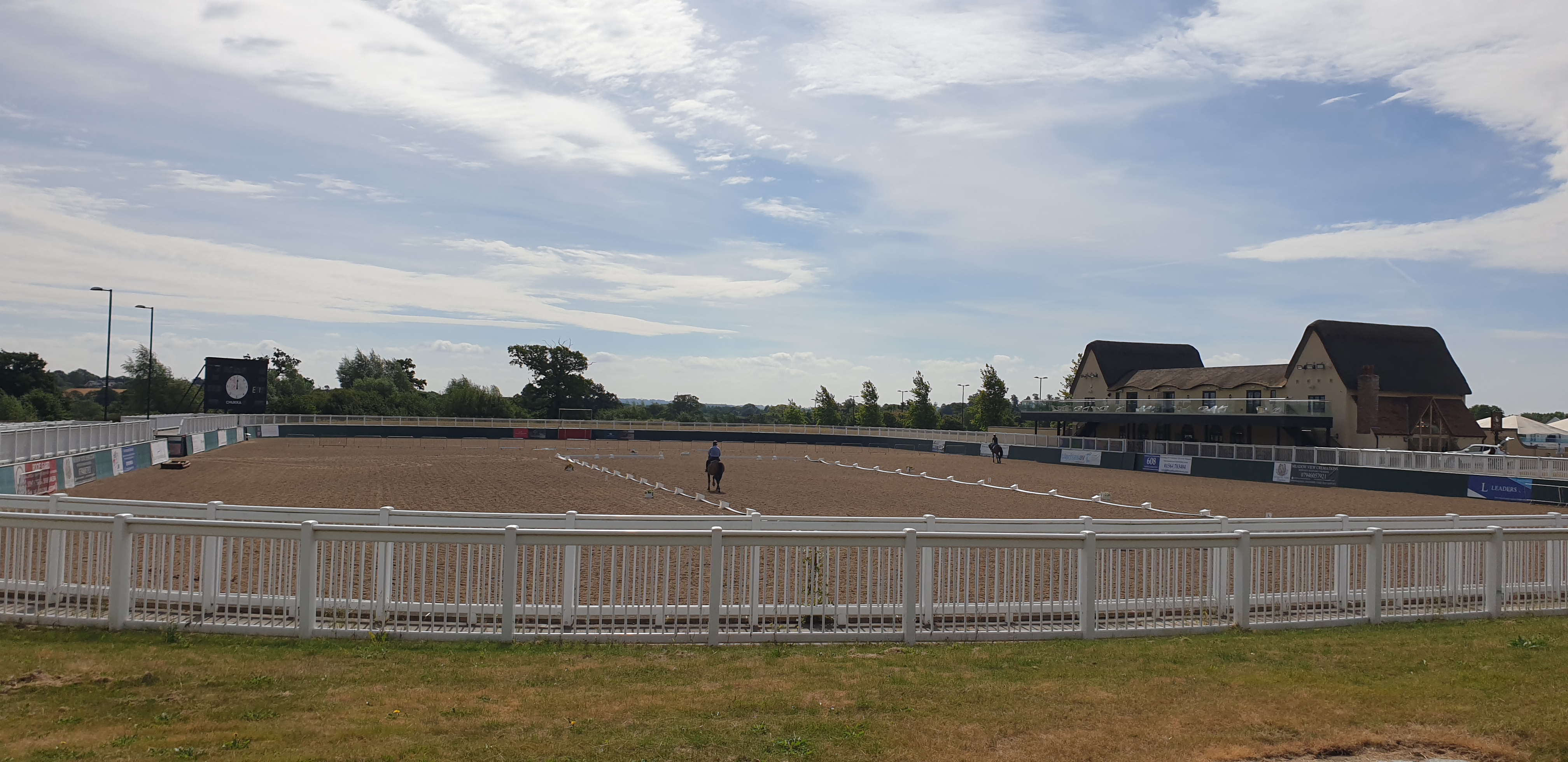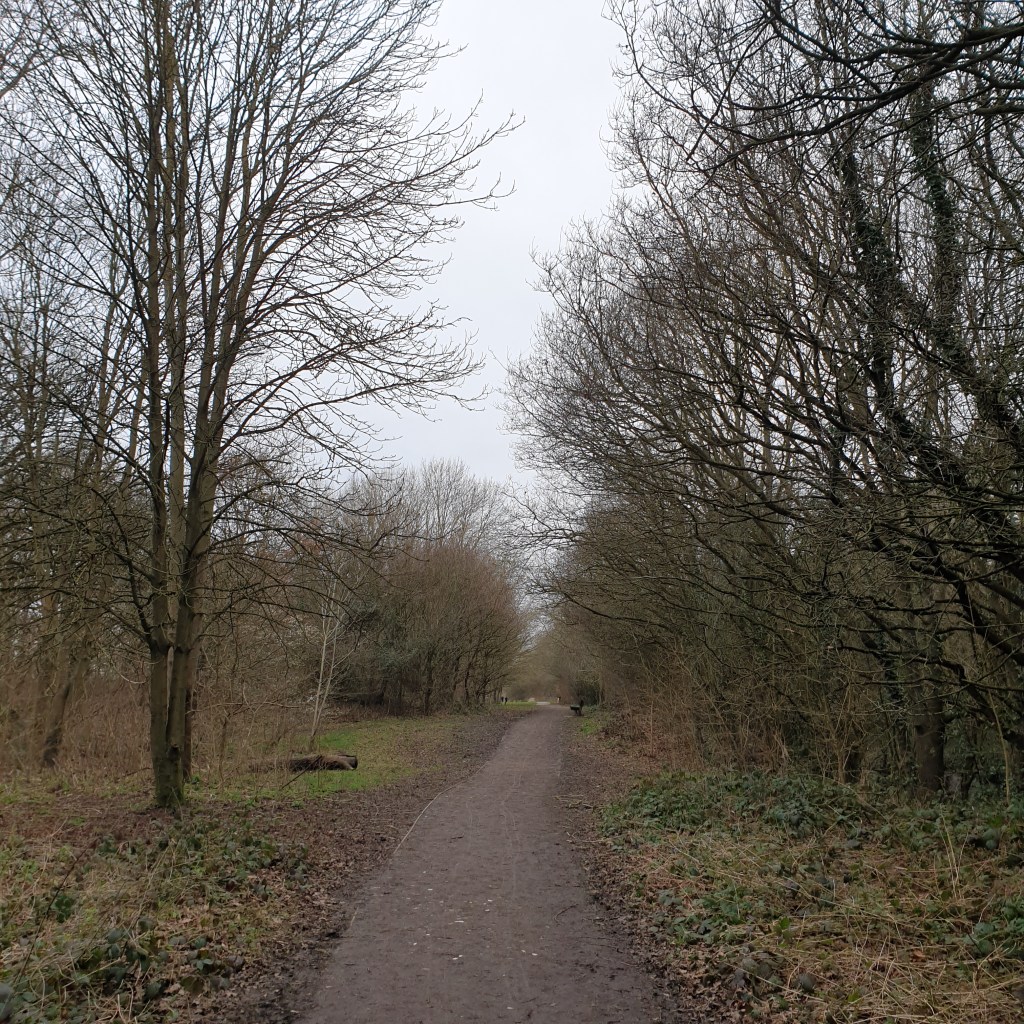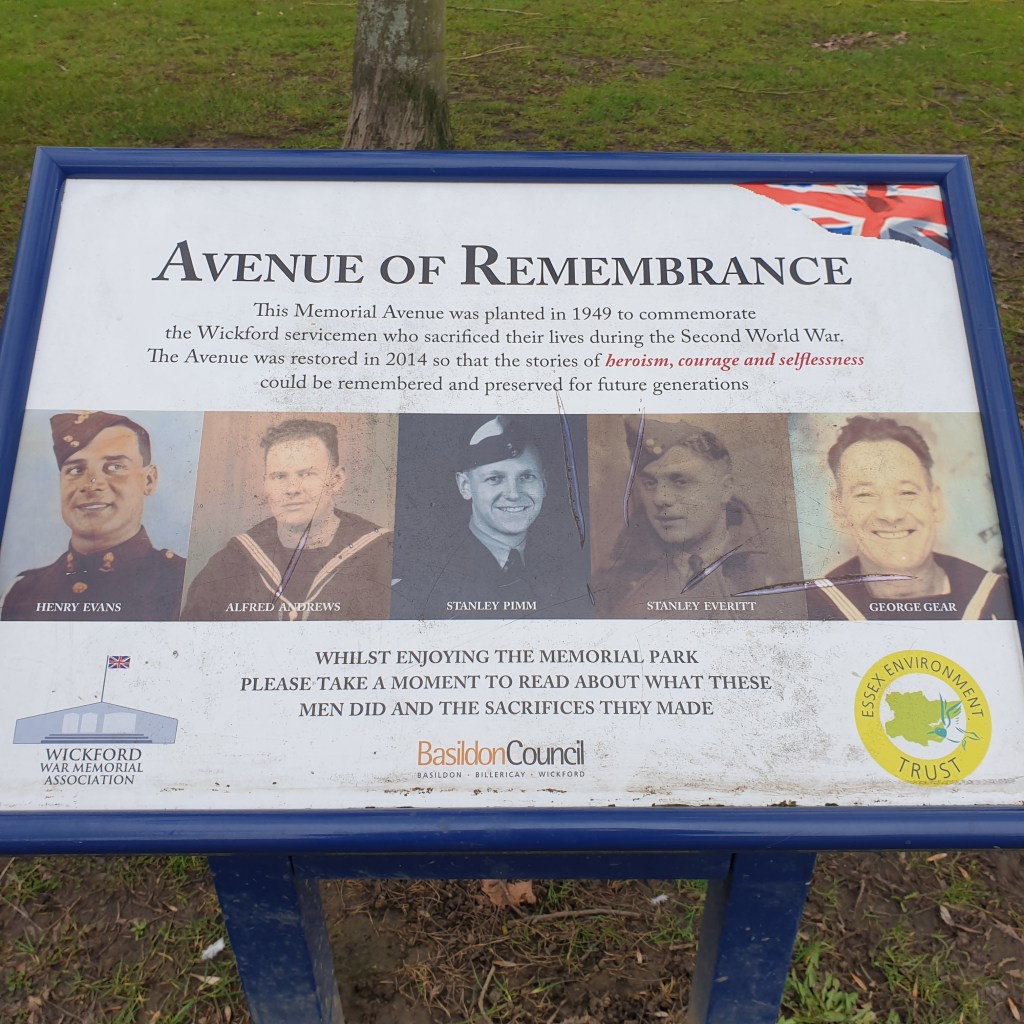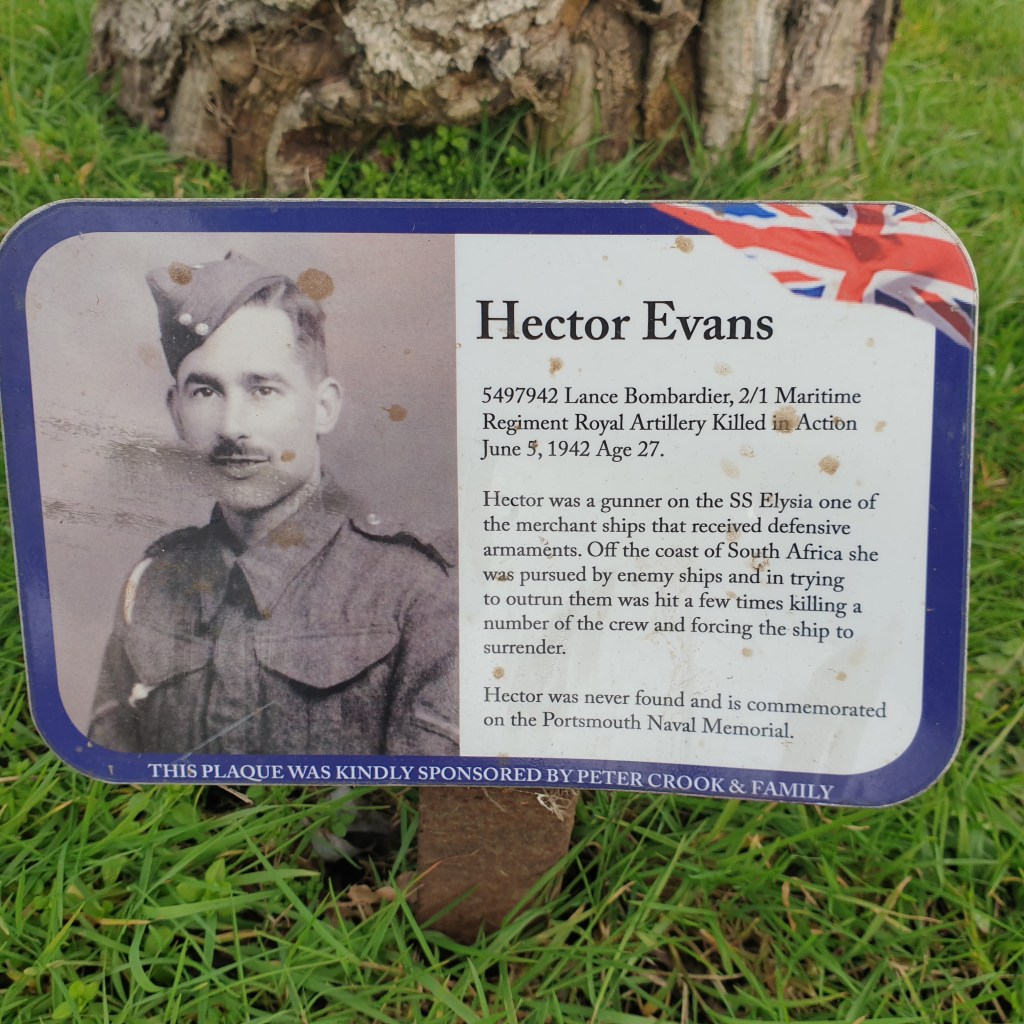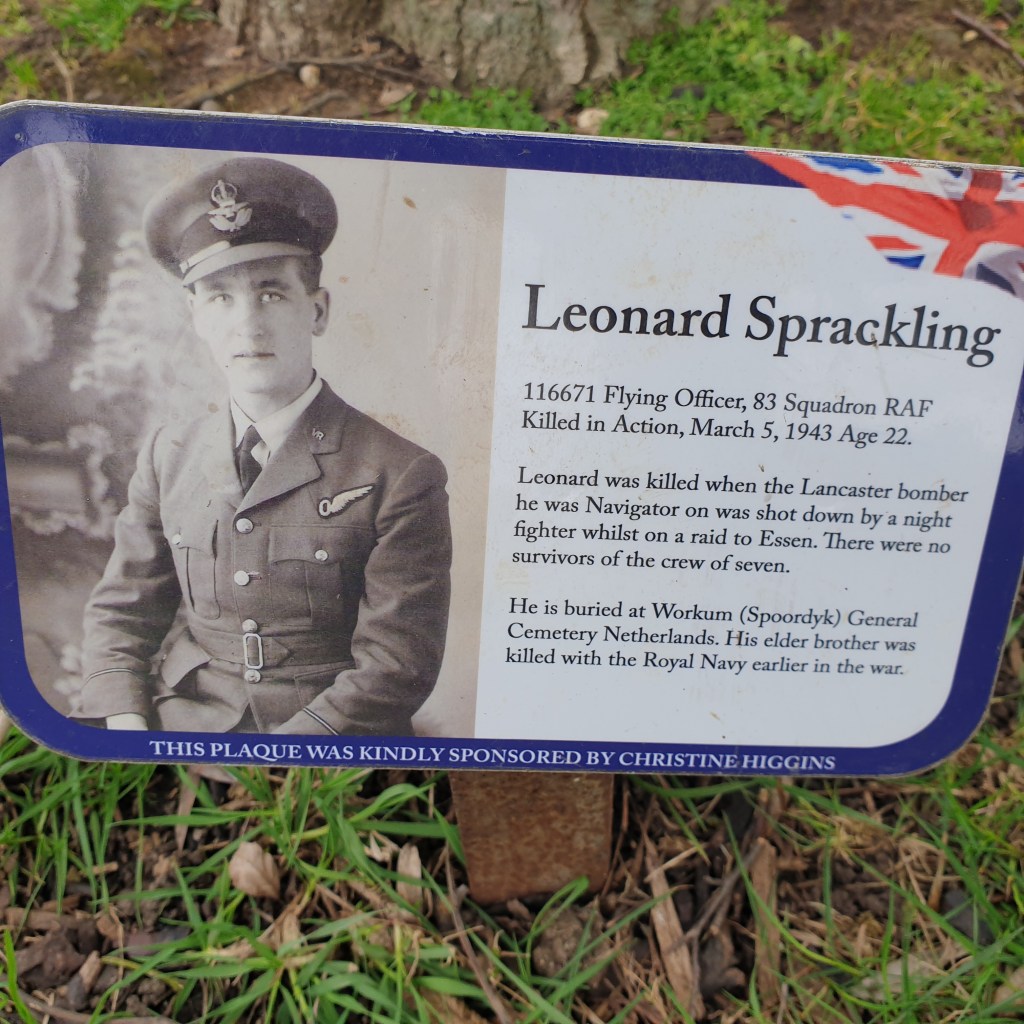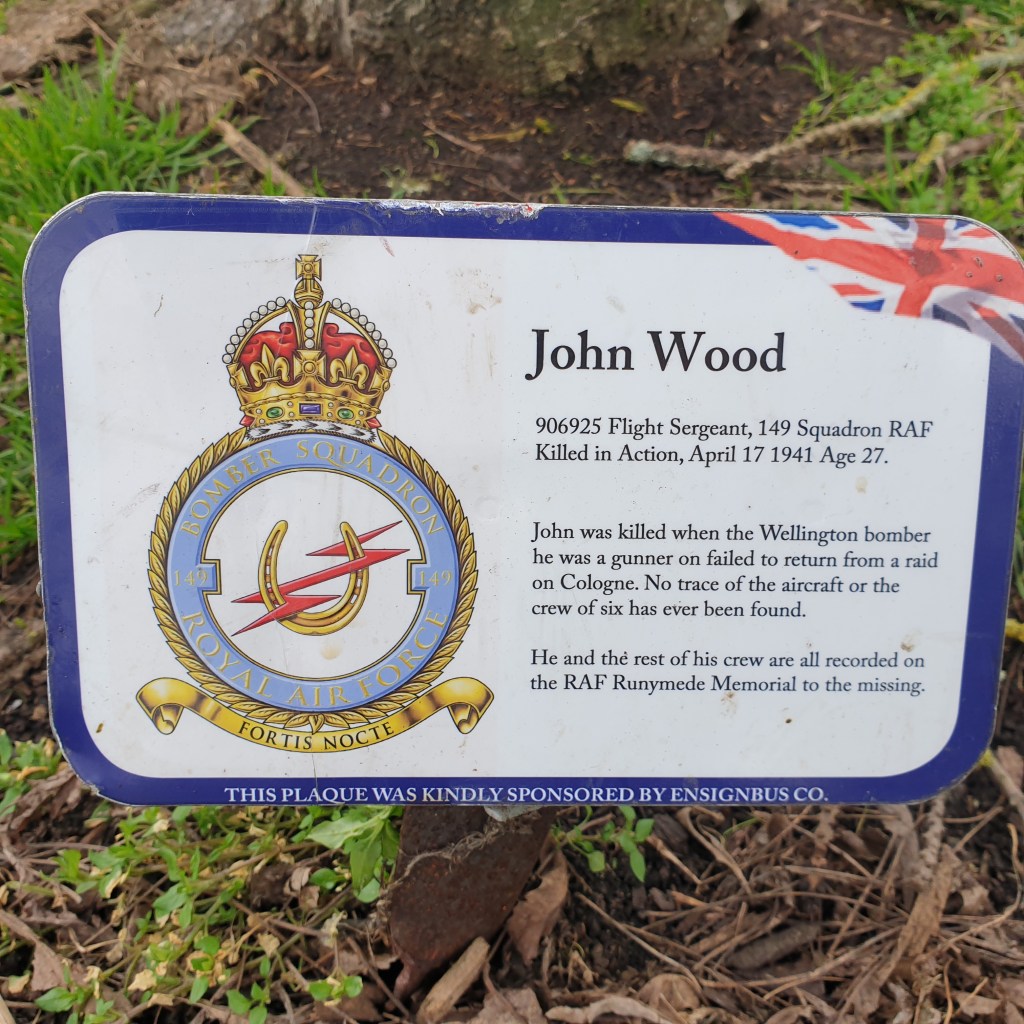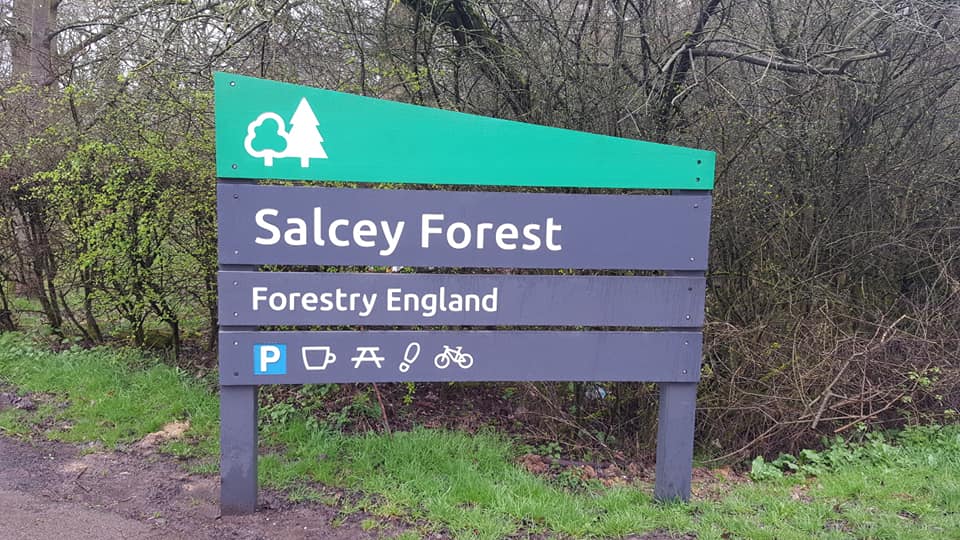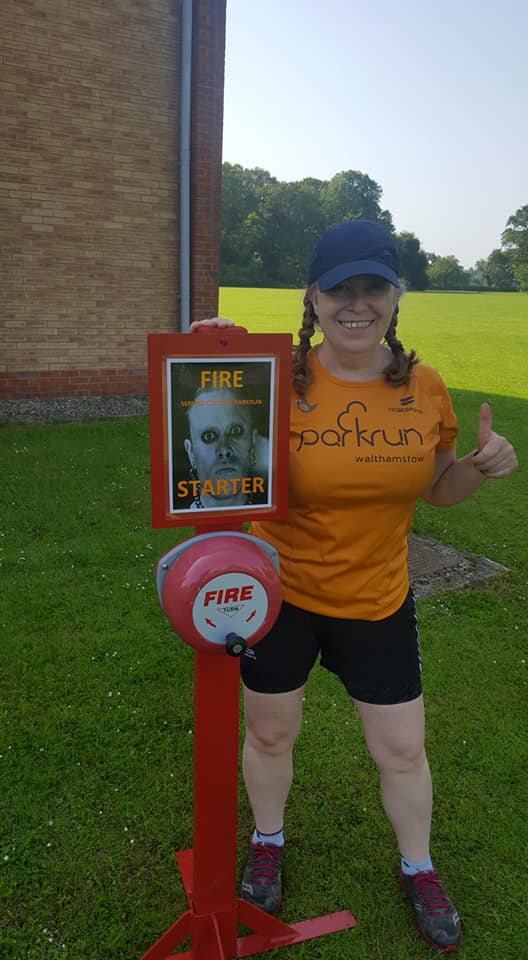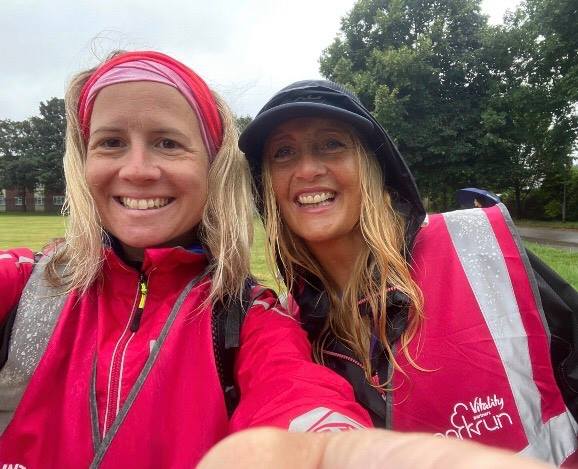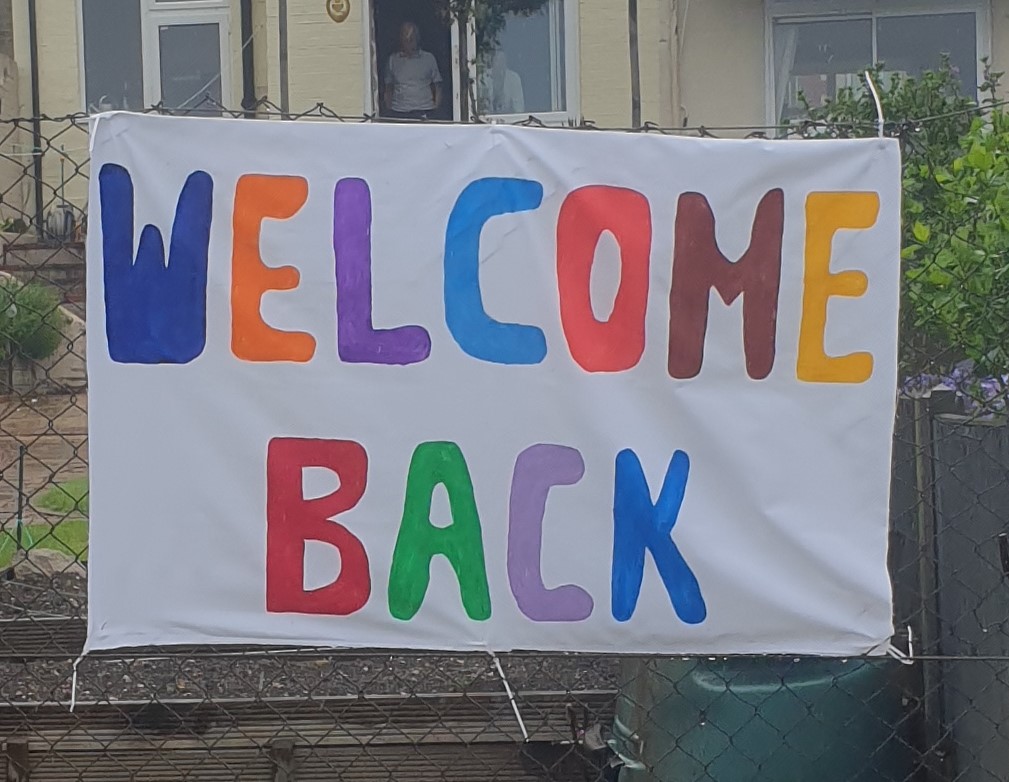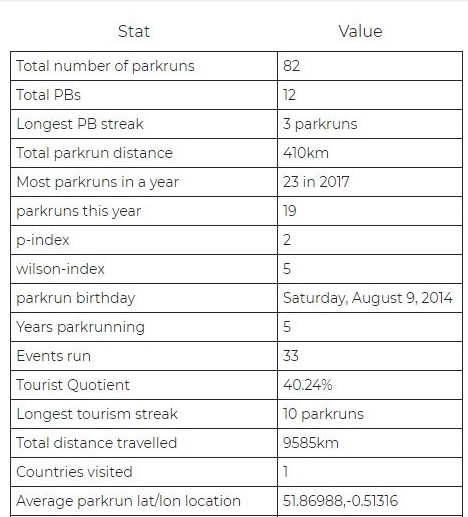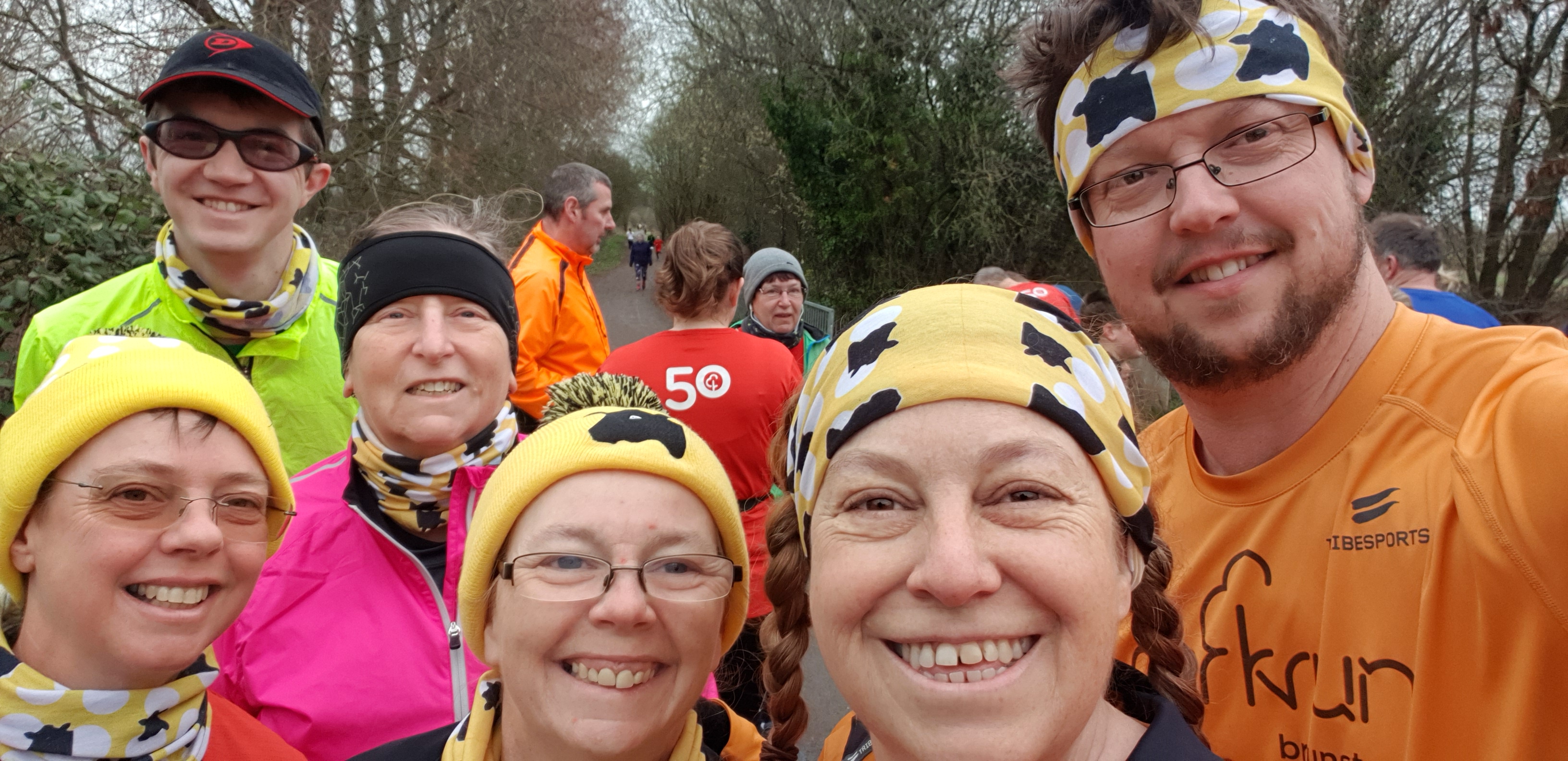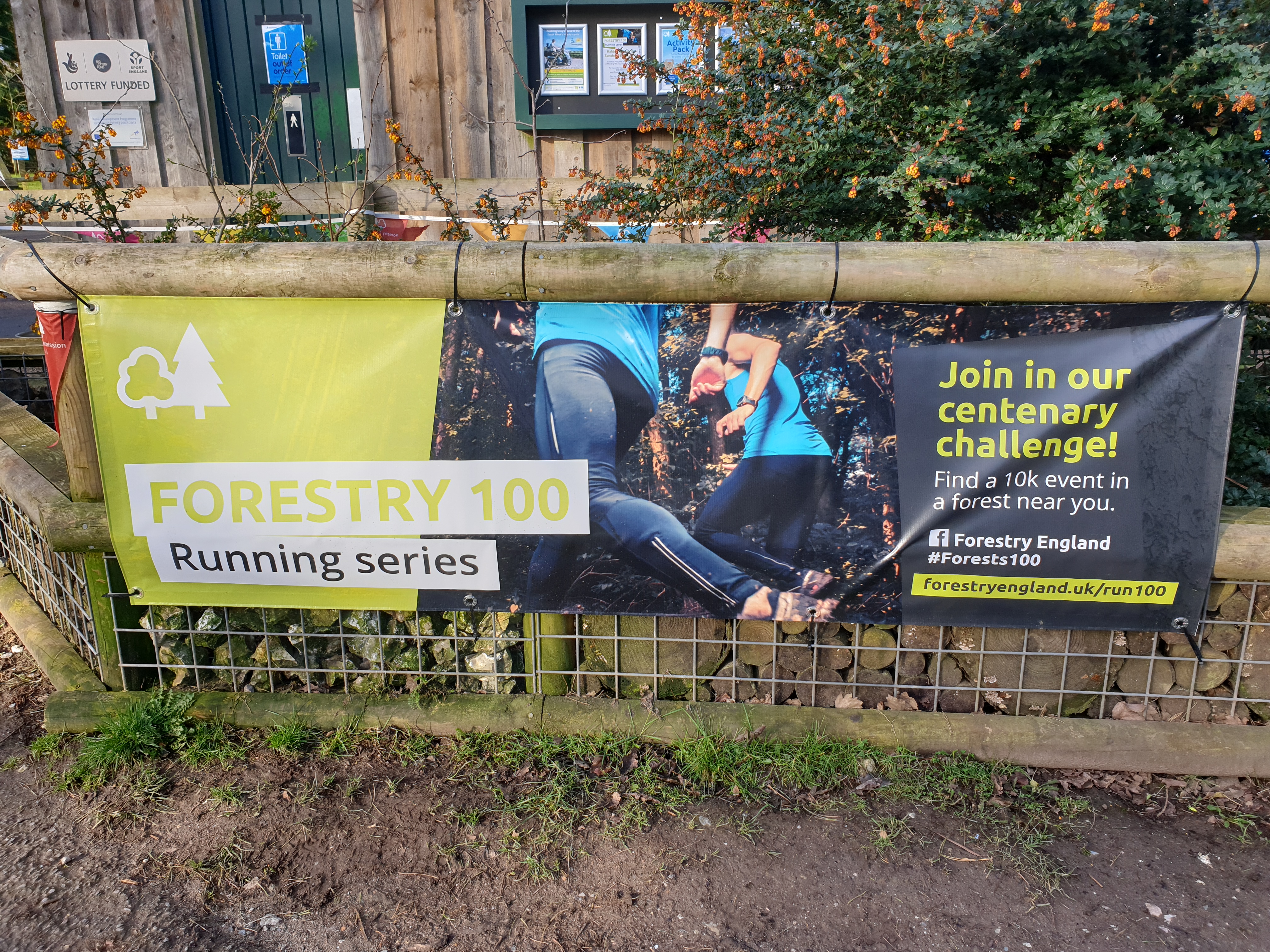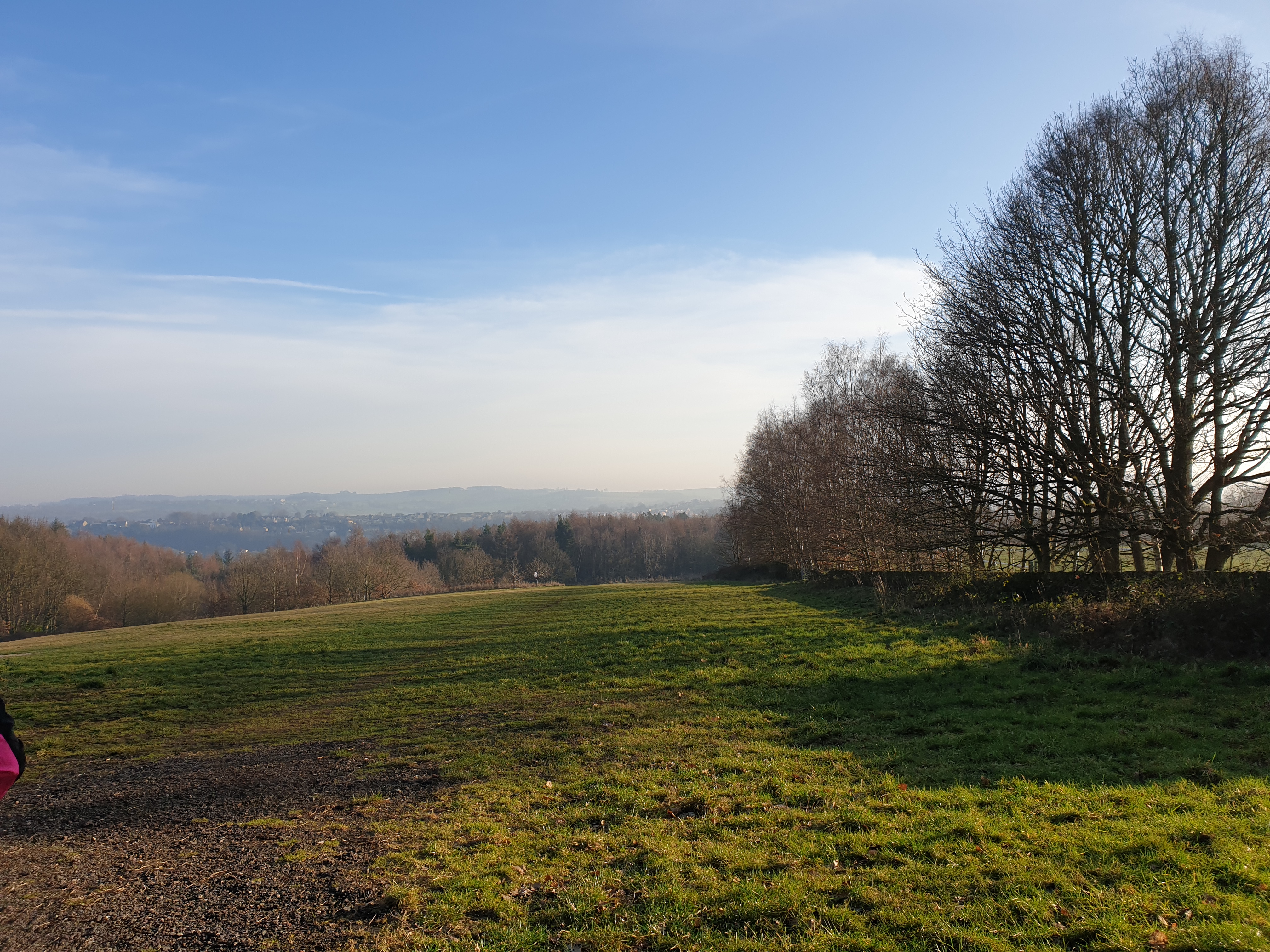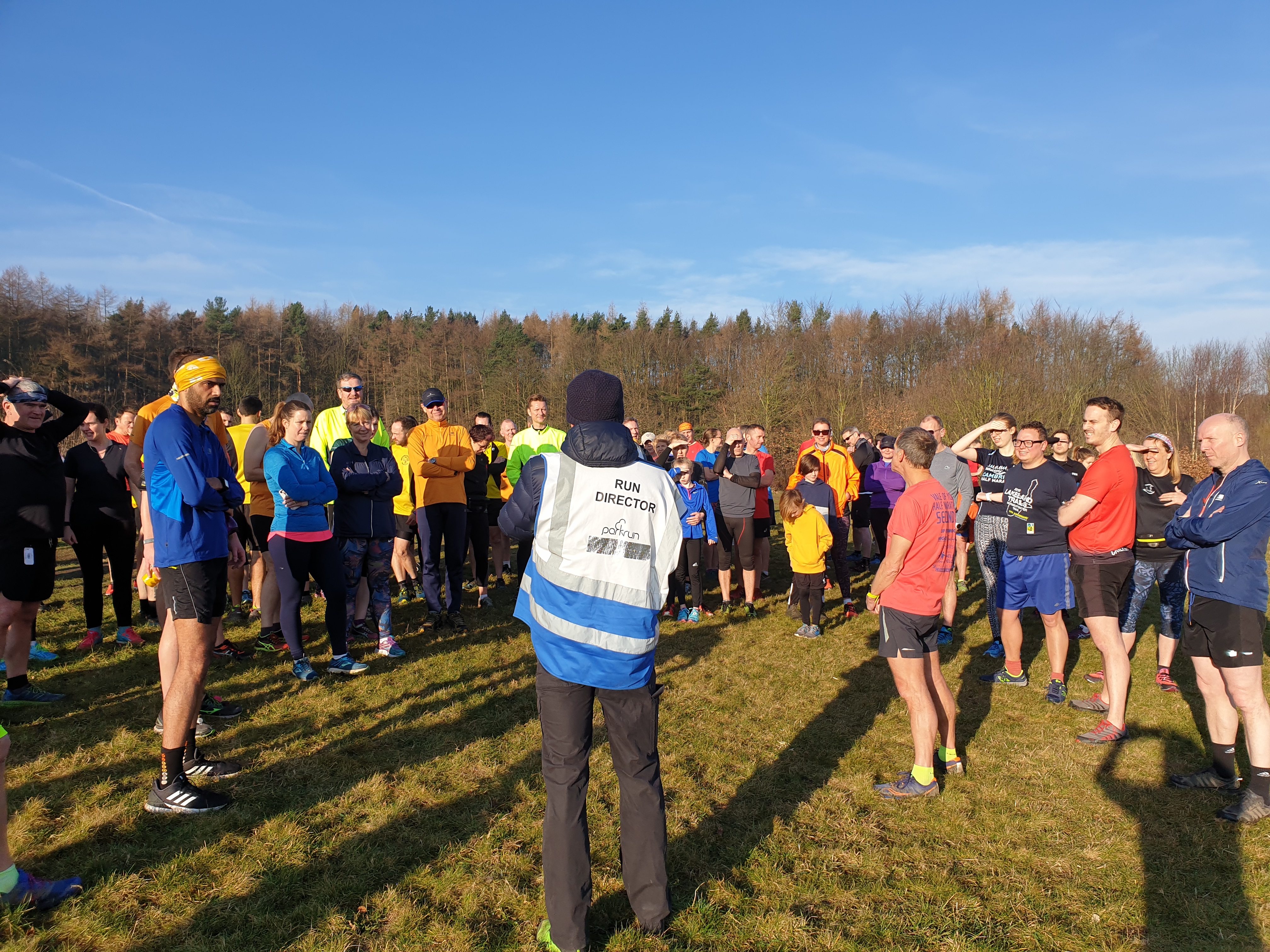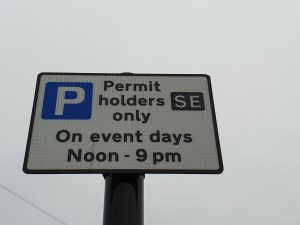When I started this blog it had no particular theme; I just intended to write about some of the places I had visited and the activities I had enjoyed. Gradually, however, my blog posts seemed to become entirely parkrun-based. This wasn’t intentional but during 2019 the parkrun tourism bug bit me big time, and I found myself eagerly planning where I would parkrun next whenever I had a spare weekend. My parkrun tourism trips also started taking longer out of my weekend as I went further afield; often staying overnight on the Friday night, and then going to the café for several hours after parkrun on a Saturday morning before driving back in the afternoon. As a result, I found that although I would ‘write’ the blog post about that particular parkrun in my head on the journey back, I often found that I didn’t transfer them from my head to actual words online. Before long a significant backlog of parkrun blog posts had built up in my head, and looking back at the blog I am shocked to discover my last post was nearly two years ago, in August 2019.
And then in March 2020 the Coronavirus pandemic meant that all parkruns across the world were cancelled, and the UK went into ‘lockdown’ at the end of March, during which time we were confined to our own homes and only allowed to go out for essential journeys such as to go to work (if unable to work from home), for food shopping or exercise in the form of solo runs/walks/cycles. No more would my weekends be spent travelling to different parkruns and then berating myself over the coming week for not finding the time to sit down and write about it! Looking at my last blog post, I wrote about the Wilson Index and ‘fomo’ – fear of missing out if I wasn’t able to do a parkrun that would fill in the gaps on my Wilson Index. This now seems so ridiculous; with a very real fear present in the form of catching Coronavirus, it seemed laughable to be worrying about missing a parkrun with an arbitrary number.

So I decided that I would spend the time in lockdown productively, by writing up my backlog of parkrun tourism posts. I also rashly ordered a crochet kit and dug out some jigsaws, thinking I would have lots of time to fill indoors since I couldn’t go out. Looking back on it now, over a year later, how wrong I was! I think lots of people panicked about being isolated and locked in the house, and rather than finding myself with lots of spare time indoors to fill, I found that time being taken up with zoom quizzes, virtual meet-ups with friends, online talks, as well as online yoga and workout sessions. parkrun itself put on a weekly “great big parkrun quiz” at 9am every Saturday morning, which was then followed by online meet-ups of the parkrun tourism community, and before I knew it my whole Saturday morning could be taken up with parkrun activities even without the parkrun itself! The parkrun podcast I listen to – and love – called With Me Now also streamed an enormous amount of content. Rather than just being a once-a-week podcast, it started doing daily parkrun pictionary, and live interviews with interesting people. And when parkrun resumed in New Zealand, With Me Now broadcast the event live. One of the run directors at a parkrun in Germany, Neckarufer parkrun, also put on a quiz every Sunday to run during the period when parkrun was paused – called the Quarantine Quiz – and I started doing this each week and found a whole new community of parkrun addicts that have become friends. I actually started to get a new ‘FOMO’ – fear of missing out on some of the brilliant online content that was being put out! And so over a year later and after a second lockdown in the UK, I find that I still haven’t written a single post from my backlog of parkrun tourism events, despite ordering a customised parkrun apricot top with the words “get down shep” on it to try to motivate me into getting back into writing.

As well as my blog post writing going by the wayside, I was worried that my fitness and running habit would also disappear. I am not a natural runner at all, and don’t find it easy to motivate myself to go out for a run, finding every excuse not to. Attending parkrun every week, entering races and joining a running club – Eton Manor AC – gave me a framework to encourage me and motivate me. At the beginning of lockdown, we were allowed – and actively encouraged – to go out an exercise daily, and I had read a lot of articles encouraging people to build their immune systems, and to use exercise to combat the isolation and depression that may develop from being ‘locked’ away. But it’s one thing understanding the benefits of running and exercising outdoors, and quite another to have the dedication to keep doing it regularly on your own. Fortunately, actual runs, training sessions and races were replaced by virtual races, and I was amazed by the creativity and the amount of different virtual challenges that emerged in this period.
The first of these ‘Virtual’ challenges that I took part in was the Adidas City Run 1 Hour Virtual Challenge. I’d taken part in the Adidas City Run 1 Hour race a couple of times previously, and signed up to take part in again in 2020 long before we had even heard of Coronavirus. It’s an unusual race format that I really like; usually races are based on distance – 5k, 10k, half-marathons or marathons – but this one is based on time instead. A one-mile course is marked out in the City of London, and the idea is that everyone runs laps of this course for exactly 1 hour – when the klaxon sounds everyone stops running and it calculates how far you’ve run. With a snappy strapline of “How far will you go?” the idea is to challenge yourself to run as far as you can in 1 hour. Because I’m a slow runner, on a distance-based race I quickly find myself at the back and running on my own, which can be quite lonely, whereas with this race everyone is just running laps and so I find myself always surrounded by people which is a novel experience for me in a race! And the course bends around on itself so that you can see people at different stages on the lap, giving lots of opportunities to wave at friends who are running at different paces. With giant clocks along the route counting down the hour, somehow I always found it psychologically a lot easier to keep going, as you can see that the amount of time you have left to run for is constantly getting smaller, whereas on a normal race counting up the distance seems to me to make it harder. The event was due to take place on 5th April 2020, and I was really looking forward to it. When it was announced that they would be holding the race virtually instead of in person, and that you now had to just run for an hour on your own on a route of your choice, I was disappointed and felt that it just wouldn’t be the same. In the run up to the race they requested suggestions for tracks for a Virtual 1 Hour playlist, and sent out the Adidas tops with runner numbers on, and so on the day I set off with the playlist in my ears, wearing my top and noticed quite a few other people wearing the tops too. And I found that I managed to run for the hour without stopping and felt a sense of achievement even though I didn’t manage to run further than the last year’s race.
My running club also got in on the act with the virtual challenges which proved to be a great motivation to me whilst we couldn’t meet up for club runs. The first race fixture that was due to be held shortly after we went into lockdown was the Eton Manor 5m handicap. This was quite easy to replicate virtually as we had the route established and set up as a Strava segment, so all we had to do was run the 5m route in our own time at some point over the week it was due to be held, and submit our times to the club facebook page, where the captain worked out the handicap times and subsequently who the winner was. The previous year I had actually won a bottle of wine for being the first female, thanks to an 8-minute head start on everyone else, with the handicaps being calculated based on your current 5k form. I’m an incredibly slow runner, so I set off expecting to be overtaken very quickly and was amazed to find that I had run the entire first lap of the two lap course without being overtaken, and then to find with only 100 metres or so to go, a club member who wasn’t running but who had set off on a bike from the finish line back down the course shouted at me “You’re in the lead!”. I thought that there was no way the club could replicate the real handicap race with a virtual version, and that I wouldn’t be as fast without people actually chasing me down, but amazingly I finished 12 seconds faster than I had run the previous year!
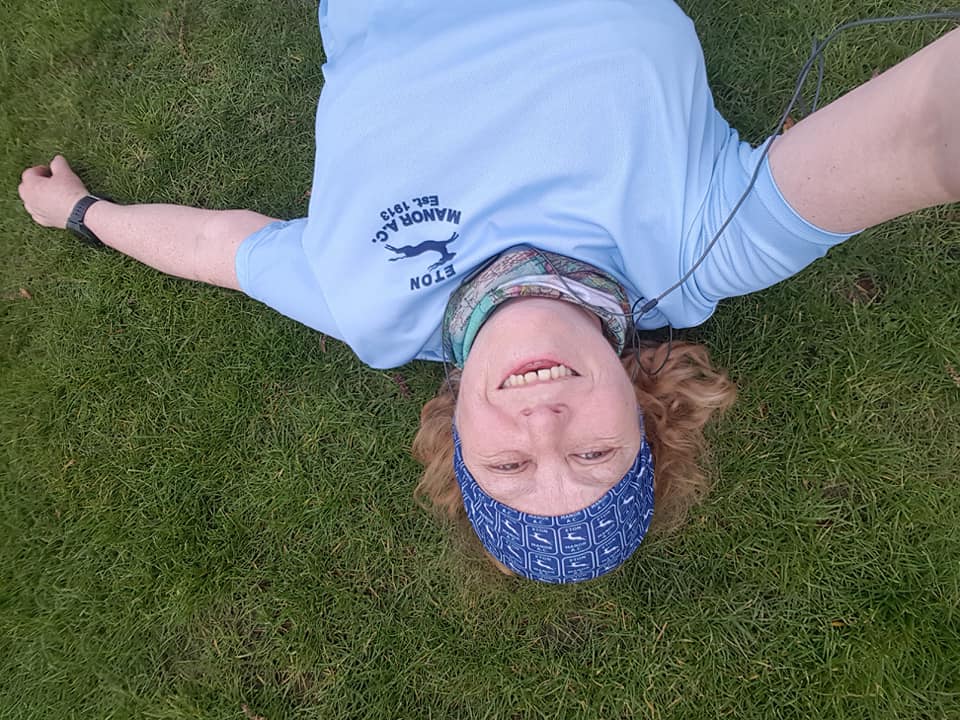
Following the success of this, the club also held a number of team and individual challenges that got increasingly more creative and complex. Some of these were virtual versions of the annual races that would normally appear in the club calendar, such as mob match against local club Orion Harriers, in which the 5k route in Epping Forest was marked out with sawdust at the side of the trail so that everyone could run safely on their own. Amazingly I managed to stick to the route through the forest without the aid of marshals, just by following the sawdust trail.

Three of the ‘virtual’ challenges I took part in over the year were relay, or team challenges. Now I’ve always had a bit of problem with team races, as they remind me of when I was at school and always the last to be picked for team games, and hate letting the team down by being so useless. The one time I agreed to take part in a relay for the club was one Christmas when I agreed to take part in the Christmas Cracker relay, where each team consisted of 3 runners, and the teams were evened out so that the slower runners were paired with the faster runners. Even then I found it a bit dispiriting as even though I was in the ‘slow’ runners leg that set off first, the relay route started with an uphill section and by the time I got to the top all the other runners had disappeared for dust! However, with a virtual team relay there was no such problem. We each ran our relay leg on our own in our own time, and recorded the time. For some of the challenges we didn’t know who our team members would be until they had run their legs, and we would watch the spreadsheet slowly become populated as each person ran their legs. For others, we knew what team we were in, with team names and team captains, who were all very encouraging despite how slowly I had run my leg! We also had fun with the team names – for one relay competition we all had names of fast animals ( I was in the Cheetahs!) and for another we all had Star Wars characters which gave me the chance to dress up for Team Leia!

But by far my favourite challenges over the year were the creative ones, where you didn’t have to be a fast runner to succeed. The first of these was a straightforward Strava Art Challenge, where we had to be creative with our routes so that the breadcrumb trail on Strava made a picture. I tried to do a tennis racquet first of all, but found that running in straight parallel lines was a lot harder than I thought with no marks on the ground to keep me on the straight and narrow. So for my second attempt, I tried a flower, and got my bearings by putting a bright coloured jacket down in the middle of the field so that I had something to aim for.
As the restrictions on running together continued throughout the year, my club created more and more imaginative challenges. I am immensely grateful to captain Paul Boddey and others, like Paul Manson, who put such effort into coming up with such creative ideas and that kept me motivated and encouraged me to go out and run when I didn’t really want to! One of my favourites was the Eton Manor Mile Bingo, which evolved over time. For the first Mile Bingo competition, a bingo card was created with a variety of different times on it. The idea was simple – get out and run a mile – exactly a mile – and if the time you ran it in matched one of the times on the card you could cross it off! You could have as many goes as you wanted, and we tried collectively to get a full house in the fortnight that the game was running. As the game went on, it became more and more difficult, as various times were crossed off. I tried several different techniques; just going and running a mile and leaving it to chance, or setting a mile time on my Garmin and trying to speed up or slow down in a vain attempt to hit one of the remaining unclaimed times, which I had written on my hand! Neither technique worked very well, but I found that I wanted to go out every day to have a go, and if I didn’t succeed with the first attempt would run another and then a third, and before I knew it I had significantly increased my daily running mileage without thinking about it. In the autumn, we revised the Mile Bingo but this time with a card for the men and a card for the women in the club, with a competition to see who could cross off the most numbers.

The Mile Bingo was given a Christmas twist in December 2020 with an Advent Bingo competition, which was, frankly, a genius idea. All you had to do was run a mile & time it. Then just like a real advent calendar, the club had a virtual Advent Calendar with 24 windows, and behind each window were three random times. You could run as many miles as you liked, but could only enter one mile time each day. Every day at 8pm the calendar window was opened and if your time matched, or was close to, one of the times behind the window, you scored points. An online table kept track of the scores, when the last window opened on 24th December, whoever had the most points won a prize. Up until this point, I generally would run perhaps three or four times a week at most, feeling that I needed my rest days, and I’d never been one to do a ‘run streak’. But this challenge tempted me to run every day and once started, I didn’t want to stop and break the run streak. When a local road that was about one mile away announced that every day at 6pm one house would reveal the next in a series of decorated Advent Windows, I decided to run there, watch the opening and then run back so that I had a choice of miles to enter.
The excitement of finding out every day at 8pm whether I’d won points by running a time that matched was replicated with the next Eton Manor virtual challenge – Snakes and Ladders! This was simple to do, but complicated to explain! Everyone had a snakes and ladders board printed off. Each day you could enter a throw of the dice by running any distance – in miles or kilometres. You entered that time into the competition, and every day at 8pm your throw was revealed – the number of miles/km you had run matched a pre-set throw of the dice, which could be anything from “move forward six spaces”, or “move backwards three spaces”, or “stay where you are” to “move to square 77”! You then carried out your move on your board, moving up the ladders and down the snakes accordingly. I really enjoyed this because I could compete with the fastest of gazelles in the club as it was so random!
It was a commonplace piece of street furniture that provided a bit more motivation last summer and throughout the year – the humble postbox! Danny Norman mentioned on With Me Now that he had been reading up about the Royal ciphers on postboxes and looking out for the different ones on his runs. This led his co-presenter Nicola Forwood to come up with the game and hashtag #postbox bingo, where arbitrary points were awarded for finding postboxes with different Royal ciphers, with the rarer ciphers gaining more points than a common or garden ERII. Suddenly I found myself noticing different postboxes and varying my running routes in an attempt to find a rare Victorian Penfold design or an even rarer Edward VIII. Hours of fun to be had as well as frustration at running down roads, seeing a postbox and running up to it in hope only to find it’s a common or garden ERII!
Having amused myself hunting down postbox ciphers over the summer – and running much further than I would have done without the motivation – I was excited when the Eton Manor captain announced that the next virtual challenge in January 2021 would involve postboxes. Thinking I might have a head start if it involved finding the different ciphers, when the actual challenge was announced it had nothing to do with ciphers. Instead, you had to start and finish at your home address, and run past 5 postboxes, tagging them by tapping them with your foot or elbow on the way. Fastest wins! Although I don’t generally enjoy races or challenges where the fastest wins, being a snail, this one was a postcode lottery in which those who lived most equidistantly from five letterboxes had an advantage – as did those who could plot an efficient route that didn’t involve crossing too many roads that sapped your time as you waited for a safe time to cross the road!

One of the most popular fixtures in the Eton Manor fixture list in ‘normal’ times is called “Pubs on the Run” – which pretty much does what it says on the tin! Members set off from the clubhouse and run on a pre-determined route to a number of pubs, stopping to have a drink in each one! So what to do in a pandemic, when all the pubs were shut? The Virtual Pubs on the Run in April 2021 had a twist – and it wasn’t that all the pubs were shut! Like the postbox challenge, you had to start and finish your Pubs On The Run virtual route at your home address, and then you had to “tag” 8 pubs on your route. But the killer twist was that the pubs had to be tagged in alphabetical order. The word “The” didn’t count, which then led to lots of discussion about whether “Ye” should be allowed to count as a Y, and also whether a wine bar counted as a pub! Hours of fun and planning was had even before I attempted my run! And when I was actually out on the run, and tagging with my foot a pub (ok, gin bar!) called Mother’s Ruin, another club member ran up behind me and kicked the same pub much to the surprise of people in the road who must have wondered why random runners were running up to the pub and kicking it!

I didn’t just take part in my running club virtual runs – there were various race organisers that took their races online and into the virtual arena too. One that I took part in and really enjoyed was called the City Scramble, arranged by the Race Organiser. The first time this ran it took place in every borough across London; the second and third times they added in various towns and cities across the UK. I started with one in Walthamstow, then did one in Newham for the second City Scramble, and then in the City of London for a special Christmas City Scramble. The premise was simple; you decided whether you were going to run a 5k or 10k route. At 9am on the morning of the City Scramble day you were sent a set of clues. You had to run to the location of each clue and find some letters indicated by the clue – for example, the second and last letter on a blue placque. When you had collected all your letters, they formed an anagram of the finishing location – like a giant treasure hunt. I was thrilled when I worked out that the letters we had collected for the Christmas City Scramble – T S E Q P O N E R R A U S R E A T – was an anagram of Paternoster Square! One of the nice things about this challenge was that we were able to do it in socially distanced teams, abiding by the Covid regulations in place at the time but allowing for the camaraderie that we had so missed during full lockdown days.
One of the best things about running over the last year was that as I couldn’t go out and run with other people, and travelling away from home to a run route was frowned upon, I was forced to discover new routes that I could get to on foot from my home address. I discovered that the Southern edge of Epping Forest was only a mile from my house, and started to explore running on the trails in the forest. This brought new challenges through running on tricky technical routes, and I once tripped on a tree root and fell quite heavily. But I also found all sorts of amazing places, and can really understand why the Japanese so love “forest bathing”. The forest looked different in different weathers, and with the changing seasons. I started studying other local runners’ Strava trails to find new places to run, and it felt like a mini-adventure to set off along a new trail, to follow my nose and see where I ended up. It was amazing how often I left what seemed to be crowded pavements with the anxiety of trying to keep a social distance away from other people, to enter a deserted forest with only the occasional dog-walker or runner passing by, yet with signs of tree-houses, dens and tree-swings showing that other people did indeed enjoy the forest too.
For a few months whilst parkrun was paused, a mysterious, anonymous character called the Walthamstow Hare, set a weekly ‘trail’ along a 5k route. The idea was that the Walthamstow Hare would run the trail, and everyone else was a ‘hound’ to see if anyone could catch the hare. Whilst I was never going to challenge anyone for the crown, or stand a chance of catching the hare, I used the challenge to find new 5k routes, including venturing into Wanstead Park for the first time. The nearest entrance to the park is around 3 miles from my house, so it suited a longer run for me. It’s thanks to the Walthamstow Hare that I discovered a path in Wanstead Park called the Chestnut Trail which was signposted and a lovely one-lap route, going through a bluebell wood, alongside a lake and with a tea-hut on route to stop for a coffee or ice cream!
In June 2020, some 3 months after parkrun had been put on pause, parkrun introduced the concept of (not)parkrun. The idea was that instead of running a 5k parkrun all together on a Saturday morning, you could run/walk/jog a 5k anywhere on any day and record the time it took you on your parkrun profile. And you could see a set of ‘results’ to see how you had done that week. It was lovely seeing the names of fellow parkrunners on the website, even if I wasn’t seeing them in person. And so that we could see the faces of fellow parkrunners doing (not)parkruns, Walthamstow parkrun held an initiative called the Rainbow Wave! Each week we had a different colour of the rainbow, and we just had to go out and do our (not)parkruns wearing something in that colour and take a selfie. All the resulting selfies were posted in a weekly report, and at the end we had a glorious Rainbow Wave collage to cheer us all up!

So parkrun is due to start again in England in a couple of days, on 24 July, and I’m already very excited. I am also very grateful to all who have kept me going and motivated to get out there over the last 16 months. Although we haven’t met in person as a community, the parkrun community has stayed strong and I have made new parkrun friends over the last year through social media and our shared love of parkrun. However, over the year I have developed arthritis in my knees and so I can’t run at the moment, and may not be able to ever run again. But I hope to be able to walk around and also volunteer in future, and have put my name down to be the tailwalker on Saturday. This blog post has turned into a mega-long post, but I did have 2 years to catch up on! Hopefully I won’t leave it quite so long before my next post; I also have quite a few blog posts to write from parkruns I did before they stopped – two of which I have found out are not going to restart. And you never know, I might even start writing about something that isn’t parkrun-based in the not-too-distant future!












